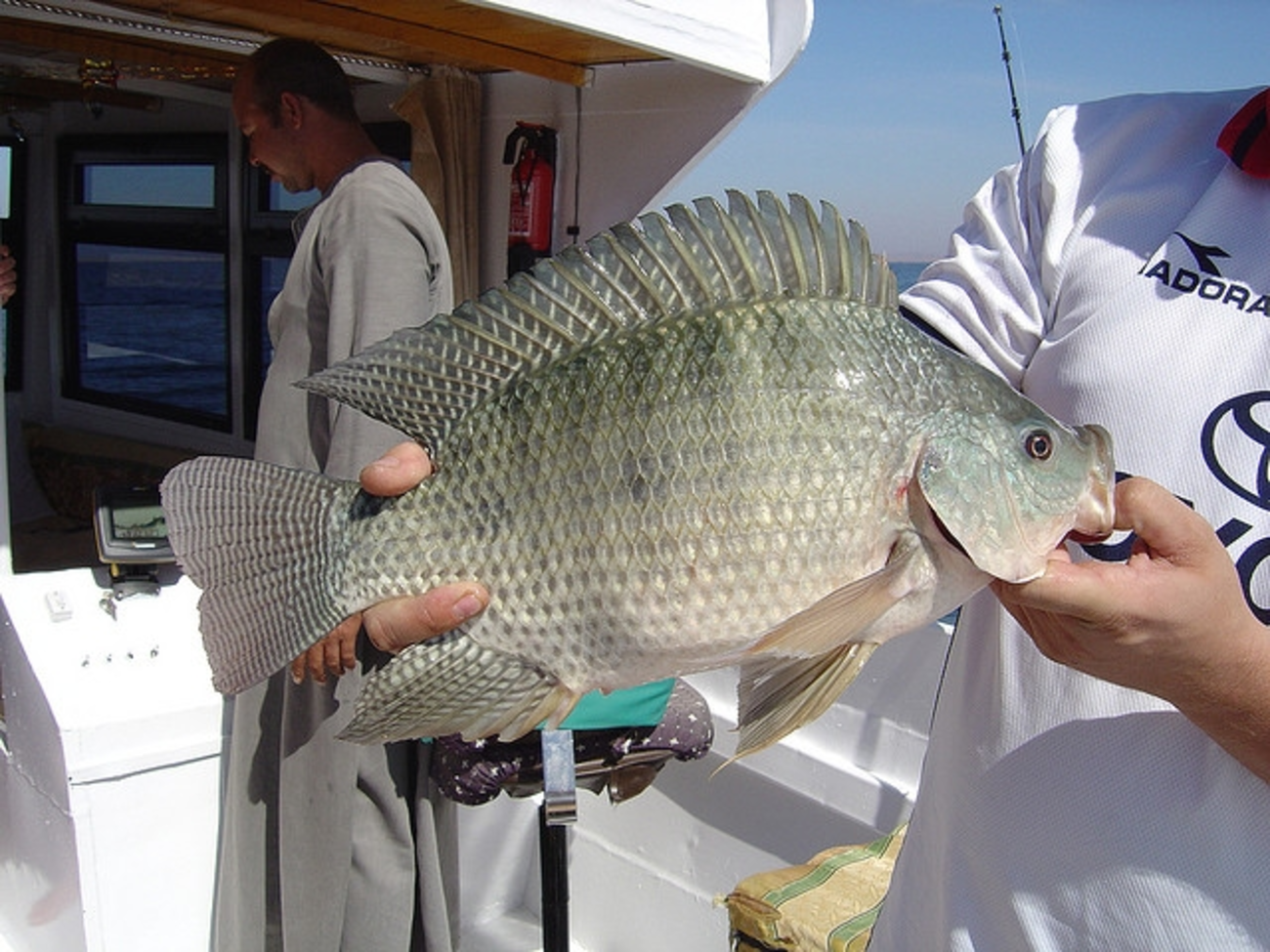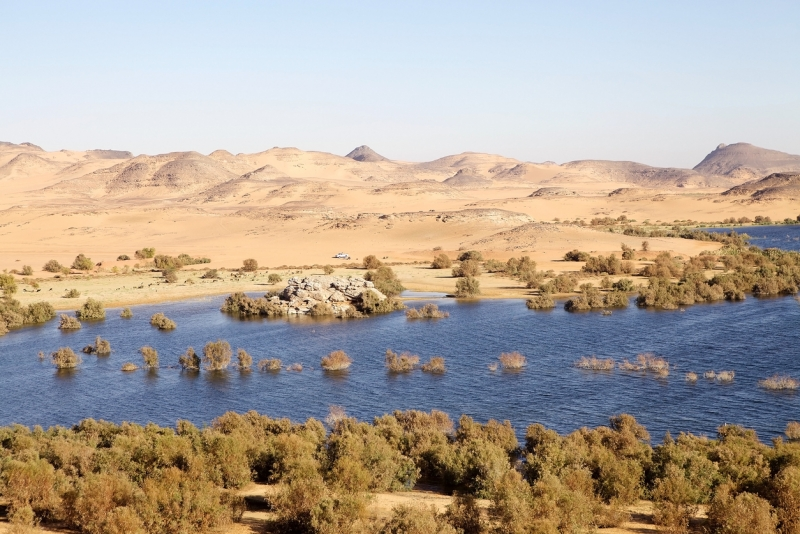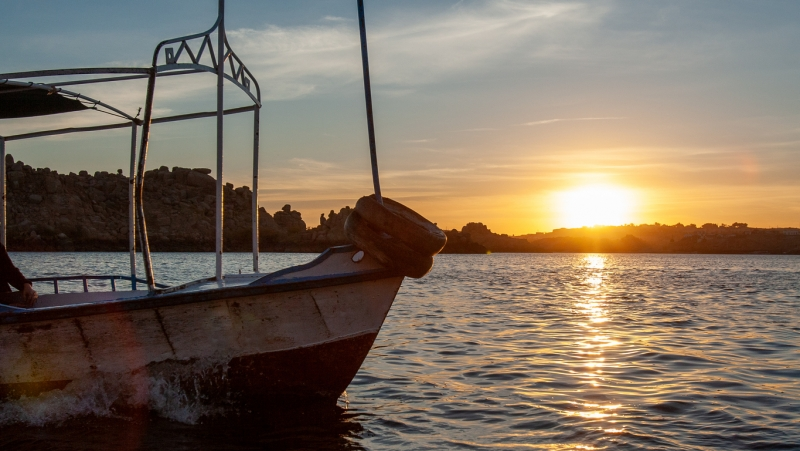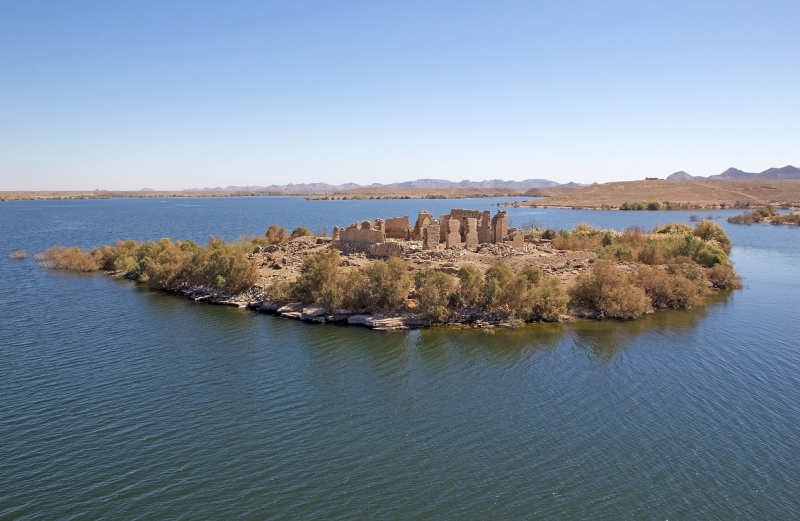Fishing in Lake Nasser

Lake Nasser, the world’s largest artificial lake, stretches over 310 miles and offers some of the best freshwater fishing anywhere. Known for its giant Nile Perch—often weighing 50 to 200 pounds—and powerful Tiger Fish, the lake has become a global destination for anglers. Located near Aswan, it is home to more than 30 fish species and supports Egypt’s fishing industry with an annual yield of around 80,000 tons. Beyond the thrill of the catch, Lake Nasser provides travelers with stunning desert scenery, rich wildlife, and a uniquely Egyptian fishing adventure.
Lake Nasser: Location, History, and Geography
Lake Nasser, one of the world's largest artificial lakes, stretches an impressive 550 kilometers (340 miles) between southern Egypt and northern Sudan. This massive water body covers about 1,550 square miles and reaches depths up to 600 feet in places. Egypt owns 83% of the lake, and the rest extends into northern Sudan.
Where is Lake Nasser located?
You'll find this huge reservoir in southeastern Egypt, where it backs up the Nile River about 320 km (200 miles) in Egypt and another 160 km (100 miles) upstream in Sudan. The Egyptians call the entire water body Lake Nasser, but the Sudanese prefer to name their portion Lake Nubia. Travelers can reach the lake by taking a three-hour drive from Aswan or catching direct flights from Cairo to Abu Simbel, which sits right next to the lake.
How the Aswan High Dam created the lake
The story begins in 1960 when President Gamal Abdel Nasser launched the construction of the Aswan High Dam. This massive project took 11 years to complete and replaced the old Aswan Low Dam from 1902 that just wasn't up to the task. The reservoir, with its enormous capacity of 169 billion cubic meters (5.97 trillion cubic feet), helps control the Nile's seasonal flooding. We use it to generate hydroelectric power and store water for agriculture.
The rising waters meant the ancient Egyptian temple complex of Abu Simbel needed a new home. Engineers and archeologists worked together during the 1960s to move this historical treasure. They took it apart piece by piece and rebuilt it safely above the water line.
Why it's called Egypt's hidden fishing gem
Lake Nasser has become a true fishing paradise. Many consider it the world's best freshwater fishing spot, especially when you have Tiger Fish and Nile Perch in mind. The lake's waters teem with thirty-two different fish species, drawing anglers from every corner of the globe. Nile Perch grow much bigger in lakes than in rivers, and most fishermen at Lake Nasser land catches between 50 to 200 pounds.
The lake remains a hidden treasure for adventure seekers and those chasing record-breaking catches, as it sees far fewer visitors than other popular fishing spots worldwide.

Fish Species You Can Catch in Lake Nasser
Lake Nasser stands out as an angler's dream destination with its rich variety of fish species. The lake's waters are home to 32-34 different fish species, creating a thriving ecosystem that draws fishing enthusiasts worldwide.
Nile Perch: The star of the lake
Nile perch (Lates niloticus) rules Lake Nasser as its most prized catch. These massive freshwater predators grow up to 2 meters long and can weigh up to 200 kg. Lake Nasser's conditions help these giants reach record sizes, and anglers regularly catch specimens between 50-200 pounds. The lake's reliable record sits at 176 kg (392 lb), though local fishermen tell tales of even bigger catches. This mysterious predator holds deep roots in Egyptian culture and was even mummified during Ramses II's reign around 1300 BC.
Tiger Fish: Fast and fierce
Two species of tiger fish swim in Lake Nasser's waters. Hydrocynus forskalii appears most commonly and grows up to 7 kg. These fierce predators share a lineage with South American piranhas and sport razor-sharp teeth that showcase their predatory nature. Tiger fish provide an exciting challenge on light tackle with their acrobatic jumps and powerful fighting spirit. Many anglers rank them among the most thrilling freshwater game fish thanks to their aggressive strikes and powerful runs.
Tilapia, Catfish, and Moonfish
Tilapia makes up 81% of Lake Nasser's commercial fish catch. Oreochromis niloticus leads by weight at 34%, with Sarotherodon galilaeus following close behind. The lake supports 18 catfish species, including the massive Vundu (Heterobranchus longifilis) and Bagrus (Bagrus bayad). Local fishermen report these giants can weigh over 100 pounds. The unique moonfish adds yet another layer to the lake's diverse fishing experience.
Rare species and biodiversity highlights
Lake Nasser's ecosystem extends beyond popular game fish. The lake originally supported over 50 species from 15 families, though this number has decreased since its formation. Several less-targeted but ecologically vital species belong to the Cyprinidae, Mormyridae, and Schilbeidae families. The lake's southern parts typically show greater fish populations than northern regions.

Fishing Techniques and Best Seasons
Lake Nasser's anglers use several proven techniques year-round based on seasons and fish species. The lake's safari-style fishing experience remains unique and hard to find anywhere else in the world.
Trolling, spinning, and fly fishing explained
Trolling proves the most successful way to catch monster Nile perch. This method lets anglers cover more water while using heavier equipment than other approaches. Casting artificial lures from boats or shorelines through spinning and drift casting gives anglers more hands-on action than trolling. Fly fishing in shallow waters presents the ultimate test for catching Nile perch. This technique still remains new and experimental.
Seasonal guide
The fishing calendar splits into two main seasons:
- Summer Season (March-September): Nile perch stay in shallow waters (10-20 feet) and follow tilapia during spawning. These conditions work great for shore fishing and fly-fishing with shallow-running lures.
- Winter Season (October-February): Fish swim to deeper waters as lake levels rise. Bigger fish get ready for January/February spawning. Deep-running lures work best for trolling over underwater promontories and islands.
Fishing from boats vs. shore
Shore fishing needs more expertise but often results in better catches, especially during morning hours or lunch breaks near camp. Boat fishing happens on custom-built vessels that come equipped with fishfinders, extra fuel tanks, and large decks perfect for battling big fish.
Hiring guides and safari packages
Safari expeditions run for multiple days with Nubian guides providing 7–8 hours of daily trolling. Fishing boats hold 2–3 anglers with support from "mother ships" that have kitchens, bathrooms, and refrigeration. Local guides direct anglers to productive spots and share their knowledge that helps catch monster fish, making these adventures a perfect addition to Egypt tours for travelers seeking unique outdoor experiences.

Customize Your Dream Vacation!
Get in touch with our local experts for an unforgettable journey.
Plan Your Trip
Planning Your Fishing Trip to Lake Nasser
A successful fishing expedition on Lake Nasser needs proper planning. The right preparation will make your experience both successful and enjoyable. Your planning should cover everything from getting there to packing the right gear.
How to get there: From Aswan to Abu Simbel
Aswan serves as your starting point to reach Lake Nasser. You can fly directly to Abu Simbel from Aswan International Airport twice daily. The flight takes about 40-45 minutes. Some travelers prefer driving through the desert landscape. Most fishing safaris start with a night's stay in Aswan before heading to the lake early next morning.
What to pack for a fishing safari
The right gear will boost your comfort in Lake Nasser's desert climate:
- Clothing: Lightweight, quick-drying shirts and pants (zip-offs work well), wide-brimmed hat with neck protection, and non-slip boat shoes or sandals
- Protection: Polarized sunglasses (pack two pairs), high-SPF sunscreen, lip balm with sun protection
- Fishing gear: Safari packages include equipment, but dedicated anglers might want their personal favorites. Equipment rental costs about €180 weekly
- Storage: Waterproof bags protect electronics, and a backpack holds daily essentials
Accommodation and tour options
Specialized vessels host most multi-day fishing safaris. The "Nubiana" features four twin-bed cabins with modern amenities. Each cabin has 220V electrical outlets and shower facilities. Packages run 5-7 days. Options include solo trips, father-son adventures (15% off for under-18s), and family packages. Prices begin at €1,750 per angler with four participants.
Permits, safety, and local regulations
Most safari packages include fishing permits (€50). You must submit passport copies 14 days before departure. Lake Nasser follows catch-and-release rules to protect fish populations. Guides might keep smaller fish for meals.
Wildlife and birdwatching opportunities
Lake Nasser offers more than just fishing. The lake is a vital stopover for migratory birds and home to many resident species. Bird enthusiasts can spot African species like Pied Wagtails, Yellow-billed Storks, and the spectacular African Skimmer. The lake also shelters one of the last Nile crocodile populations. These ancient reptiles sometimes bask on distant shores.
Cultural experiences: Nubian villages and temples
Nubian villages add rich cultural depth to your fishing trip. These vibrant communities showcase unique architecture and age-old traditions. Local residents welcome guests with tea or hibiscus drinks (Karkade) and their traditional "Shamsi" bread. Food experts rank this bread among the world's best. The area also features ancient temples moved during the lake's creation. The UNESCO-protected Abu Simbel stands out as a masterpiece that attracts visitors globally.
The best time depends on the season. From March to September, anglers enjoy shallow-water fishing, while October to February is prime for deep-water fishing. Both seasons offer exciting catches during your Egypt tours.
Lake Nasser is famous for its giant Nile Perch, often weighing 50–200 pounds. You can also catch Tiger Fish, Tilapia, Catfish, and Moonfish, making every trip rewarding.
Most safaris start in Aswan. From there, you can fly to Abu Simbel or take a road transfer. Many guided packages include transport, making access simple for visitors.
Trolling is the top method for catching trophy-sized Nile Perch. Spinning, drift casting, and even fly fishing in shallow waters are also popular among anglers.
Yes, permits are required and usually included in safari packages. The lake follows catch-and-release rules to protect fish stocks, so plan ahead and submit passport details 14 days before your trip.






